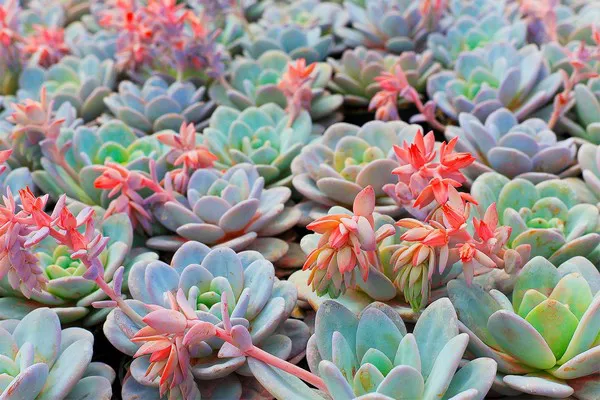Succulents are a diverse and fascinating group of plants known for their unique ability to store water in their fleshy leaves, stems, and roots. These resilient plants come in a variety of shapes, sizes, and colors, making them a popular choice among gardeners and plant enthusiasts. One of the most intriguing aspects of succulents is their capacity to regenerate and grow from individual leaves.
Understanding Succulent Leaves
Succulent leaves play a vital role in the plant’s survival, acting as natural water reservoirs. These leaves are often thick, fleshy, and adapted to arid environments. Some of the most commonly known succulent genera include Echeveria, Sedum, Crassula, and Aloe. To regrow succulent leaves successfully, it’s essential to understand the unique characteristics of these plants.
Selecting the Right Succulent Leaves
The first step in regrowing succulent leaves is to select the right leaves for propagation. Healthy, plump, and undamaged leaves are your best choice. Look for leaves that are not etiolated (elongated due to insufficient light) or showing signs of disease or pests. Ideally, you want leaves that are at least 2-3 inches long and have not fallen naturally from the plant.
Preparing for Propagation
To encourage successful propagation, follow these steps to prepare your succulent leaves:
Gently twist or cut the selected leaves from the plant using clean, sharp scissors or pruning shears. Ensure a clean, straight cut to minimize the risk of rot.
Allow the cut leaves to air dry and callus for a day or two. This step is crucial as it helps prevent moisture absorption that can lead to rot.
Once callused, place the leaves on well-draining soil or a propagation tray, slightly burying the end from which you removed them from the mother plant. The cut end should be in contact with the soil, while the healthy end faces upward.
Succulent Propagation Methods
There are several methods for regrowing succulent leaves, each with its advantages and best practices. Some of the most popular methods include:
Leaf Propagation: This is the most common method for regrowing succulents. It involves planting individual leaves in well-draining soil and waiting for them to produce new growth.
Stem Cutting Propagation: Certain succulent species, such as Echeveria, can be propagated from stem cuttings. You can snip off a healthy stem, allow it to callus, and then plant it in soil.
Offsets and Pups: Many succulent varieties produce offsets or pups around the base of the mother plant. These can be carefully separated and planted in their pots.
Division: Some succulents, like Agave and Aloe, can be propagated through division. You can separate the offshoots from the main plant and replant them in their containers.
Caring for Regrowing Succulent Leaves
Proper care is essential to ensure your succulent leaves successfully develop into new plants. Here are some tips for nurturing your propagating succulents:
Sunlight: Succulents thrive in bright, indirect sunlight. Place your propagating leaves in a location with ample light but avoid direct sun, as it can scorch the delicate leaves.
Watering: Succulents have low water requirements. Allow the soil to dry out between waterings, and be cautious not to overwater, as excess moisture can lead to rot.
Well-Draining Soil: Use a well-draining succulent or cactus mix to ensure the soil doesn’t retain excess moisture.
Temperature: Succulents prefer temperatures between 60-80°F (15-27°C). Protect them from extreme cold or heat, as it can stress the plants.
Patience: Succulent propagation can be a slow process. Be patient and give your leaves time to develop roots and new growth. It may take several weeks or even months for visible progress.
Common Challenges and Solutions
While regrowing succulent leaves can be rewarding, there are common challenges that gardeners may encounter. Here are some issues and solutions:
Leaf Rot: Overwatering or poor drainage can cause leaf rot. If you notice rot, remove the affected leaves and adjust your watering habits.
Leggy Growth: If your propagated succulents grow tall and leggy, it’s a sign they need more sunlight. Move them to a brighter location.
Slow Growth: Succulent propagation can be slow, and some leaves may take longer to show progress. Be patient and give them time.
Pest Infestations: Keep an eye out for pests like mealybugs and aphids. Treat any infestations promptly with appropriate pest control methods.
Conclusion
Regrowing succulent leaves is a rewarding and satisfying endeavor for any plant enthusiast. The ability to propagate these resilient plants from a single leaf showcases the wonder of nature and the adaptability of succulents. By selecting the right leaves, employing the proper propagation methods, and providing the necessary care, you can grow an impressive collection of succulents, enhancing your indoor or outdoor garden. Remember to exercise patience, as the process can take time, but the end result is well worth the effort. So, go ahead and embark on your journey to regrow succulent leaves, adding beauty and diversity to your plant collection.


